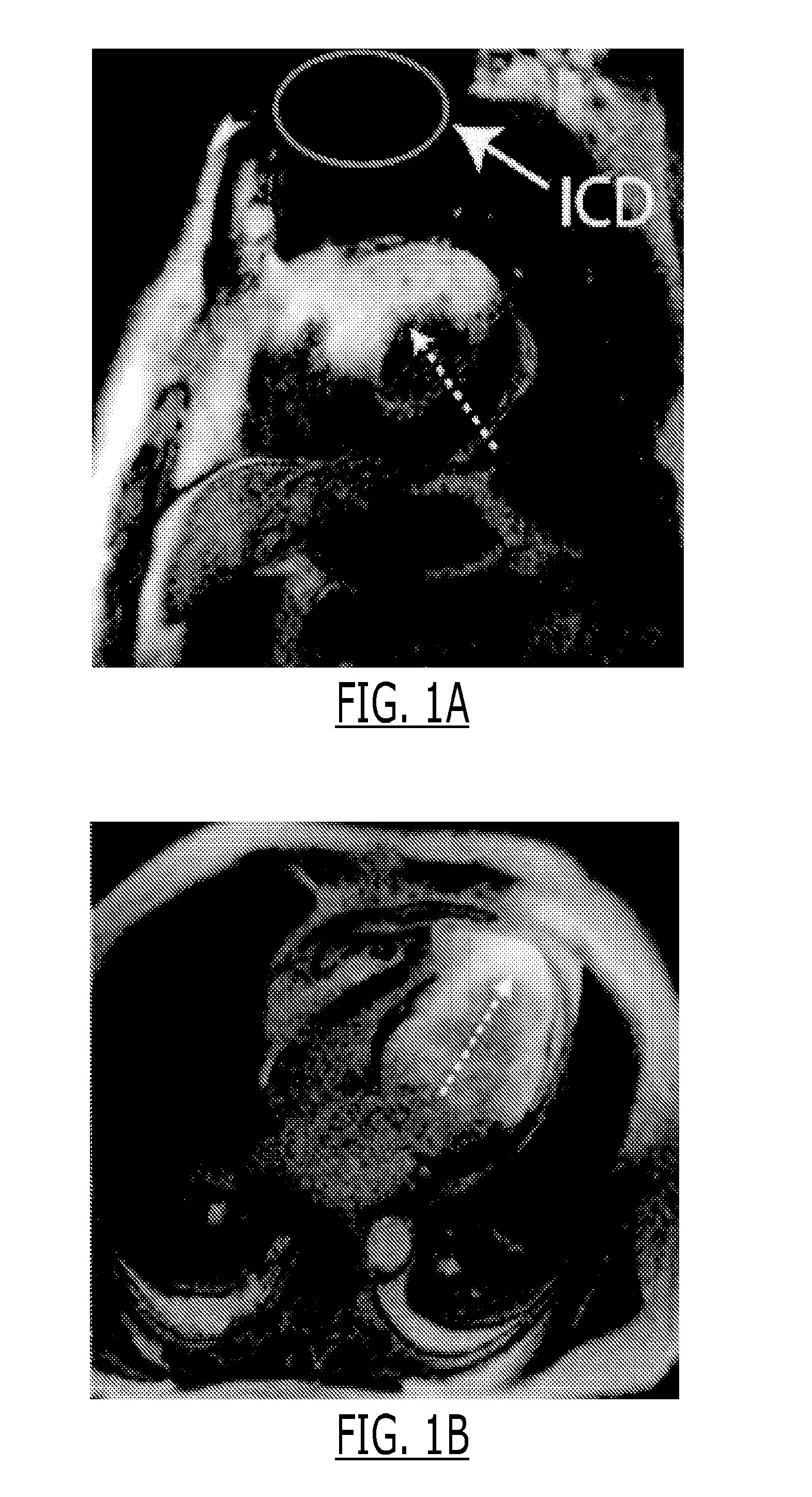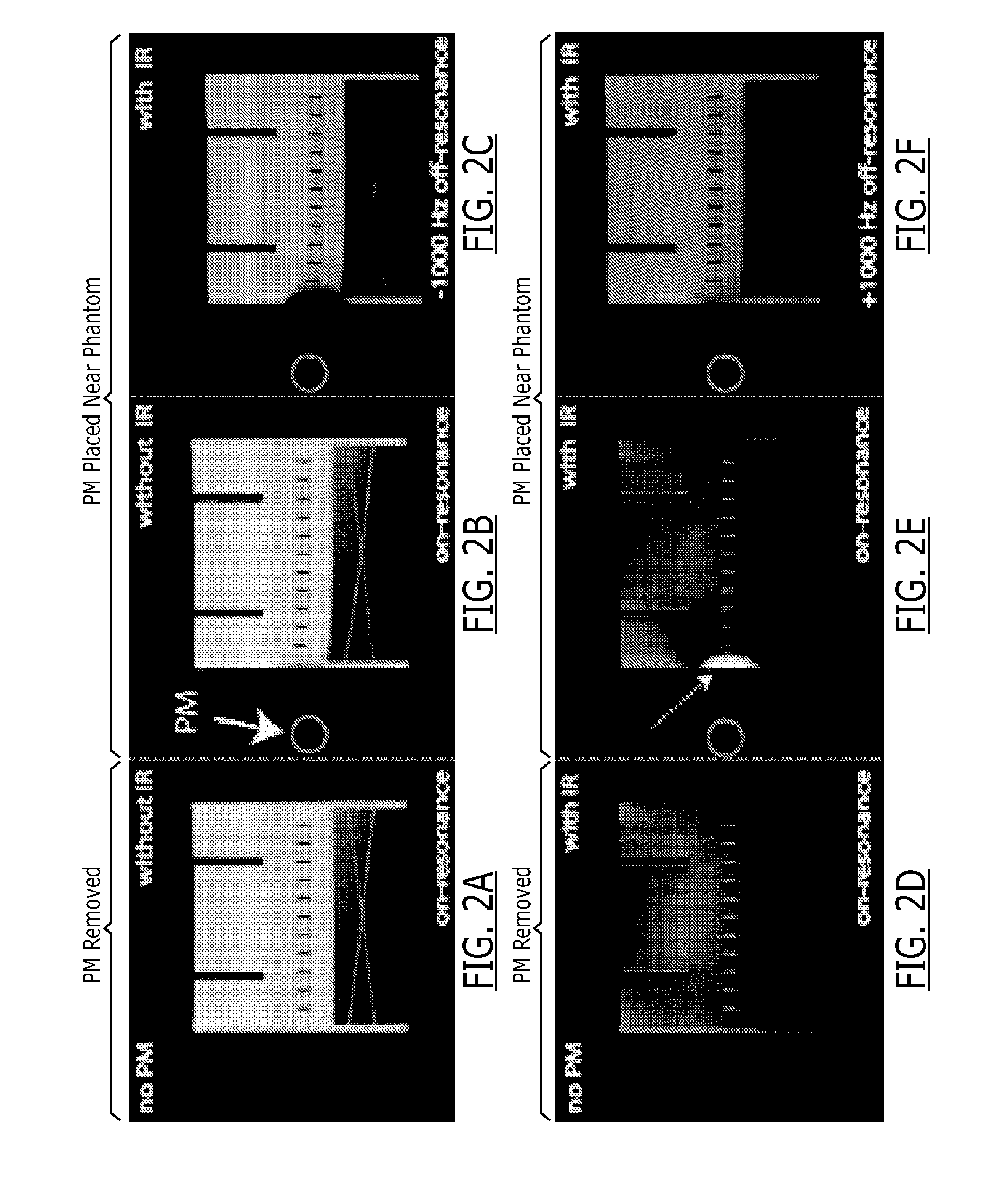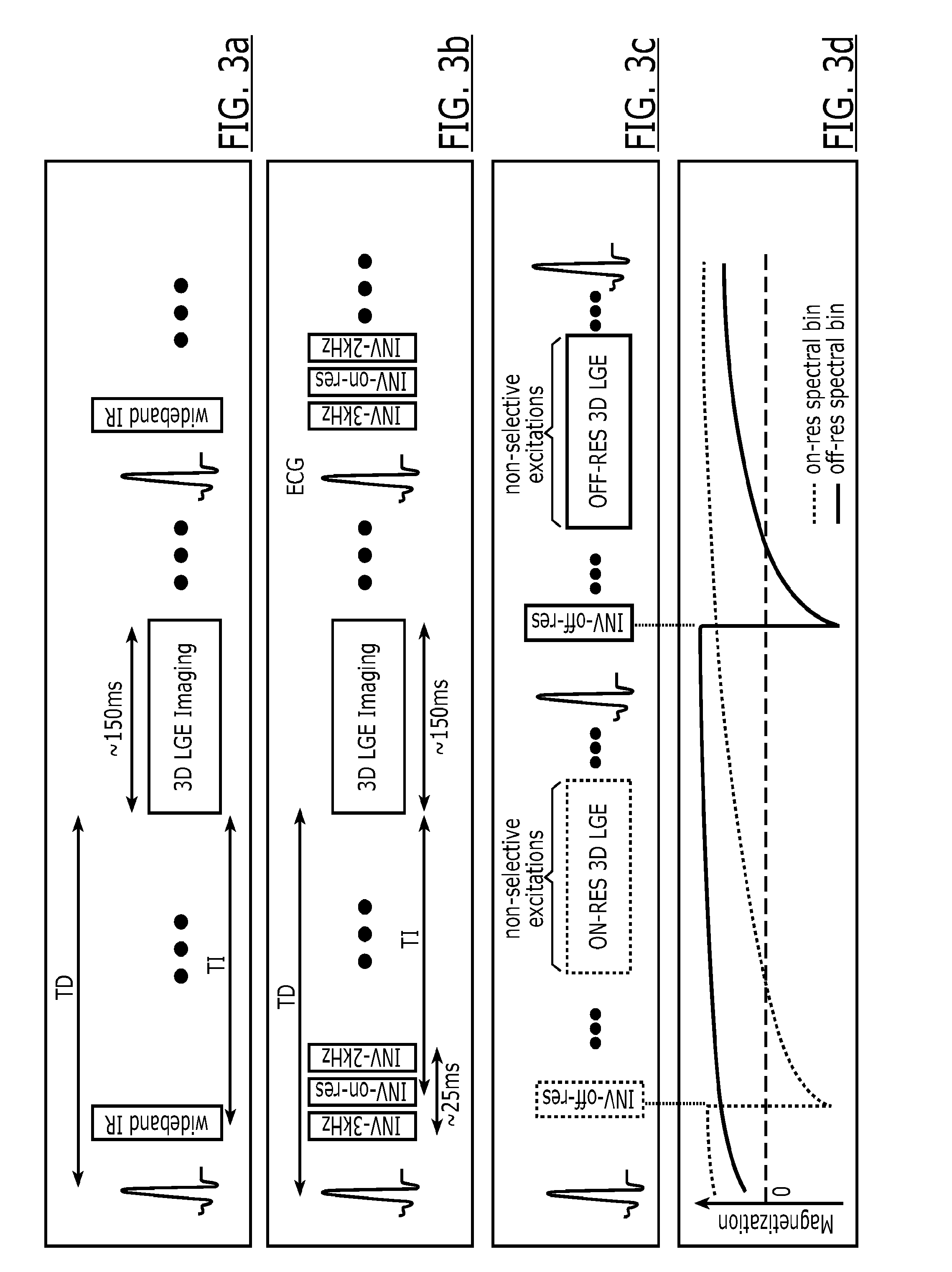Cardiac late gadolinium enhancement MRI for patients with implanted cardiac devices
a technology of cardiac implants and enhancement scars, applied in the field of clinical practice of medical imaging on patients with metal-containing devices, can solve the problems of cardiac implant device mri, icds or pacemakers mri, and non-applicability of medical imaging techniques such as magnetic resonance imaging (mri), and achieve the effects of eliminating image quality issues, high quality, and enhancement scar imaging
- Summary
- Abstract
- Description
- Claims
- Application Information
AI Technical Summary
Benefits of technology
Problems solved by technology
Method used
Image
Examples
example 1
Imaging Patients with ICDs
[0139]Images from 6 VT patients with ICDs who underwent cardiac MRI were examined. FIG. 1 shows representative LGE images acquired in two of these patients, where the anterior and apical regions of the left ventricle show bright signal intensity that makes it impossible to assess any myocardial scar in these regions. Although efforts were taken to reduce these artifacts at the time of scanning, the LGE images of the 6 patients were either totally non-diagnostic or the diagnostic value was severely limited by the presence of the bright artifacts. The observations of the artifacts were consistent with that of previous studies.
[0140]The conventional LGE sequence uses a non-selective adiabatic IR pulse typically with an inversion time (TI) of 200-300 ms to null the healthy myocardium. In the presence of a metallic object, the regions well beyond the physical boundary of the metallic object will be affected by strong off-resonance, often reaching up to 15-20 kHz...
example 2
Development of Strategies for Multi-spectral Imaging
[0141]A phantom study was performed on a 1.5 T MRI system (Avanto, Siemens). A pacemaker (PM) that was previously implanted in a patient was placed approximately 7 cm to the right of a phantom (shown in red circle in FIG. 2). LGE images were acquired using the clinical 2D IR spoiled gradient echo LGE sequence with TI=200 ms.
[0142]The same LGE sequence was repeated with the exception that the modulation frequency of the inversion and excitation RF pulses was manually shifted up to ±1 kHz. On-resonance LGE MRI without the IR pulse was also performed. The same experiments were repeated after removing the pacemaker.
[0143]Results are shown in FIG. 2. In the on-resonance image with pacemaker placed, the part of the phantom affected by the off-resonance is bright (dashed arrow) and the “myocardium” is suppressed, a similar observation as in the in vivo example shown in FIG. 1. The images with −1000 Hz RF frequency shift shows the affected...
example 3
Case Study
[0144]Methods:
[0145]Recent literature shows that cardiac MRI, including LGE MRI, can be safely performed for patients with cardiac devices. However, the current LGE MRI sequence suffers from bright signal artifacts as shown in FIG. 5A. These image artifacts prevents assessment of presence or absence of myocardial scar in the affected regions, which are typically apical and anterior left ventricular wall for a device implanted on the left side of the heart. Although these image artifacts were previously reported, there has been no solution proposed for this problem. It was hypothesized that the bright signal artifact is caused by the affected myocardium not being properly inverted by the non-selective inversion pulse that is typically played in a traditional LGE MRI pulse sequence due to the limited spectral bandwidth of the inversion radiofrequency pulse.
[0146]To preliminarily test the hypothesis, a patient with an implantable cardiac defibrillator was imaged twice. Firstl...
PUM
 Login to View More
Login to View More Abstract
Description
Claims
Application Information
 Login to View More
Login to View More - R&D
- Intellectual Property
- Life Sciences
- Materials
- Tech Scout
- Unparalleled Data Quality
- Higher Quality Content
- 60% Fewer Hallucinations
Browse by: Latest US Patents, China's latest patents, Technical Efficacy Thesaurus, Application Domain, Technology Topic, Popular Technical Reports.
© 2025 PatSnap. All rights reserved.Legal|Privacy policy|Modern Slavery Act Transparency Statement|Sitemap|About US| Contact US: help@patsnap.com



